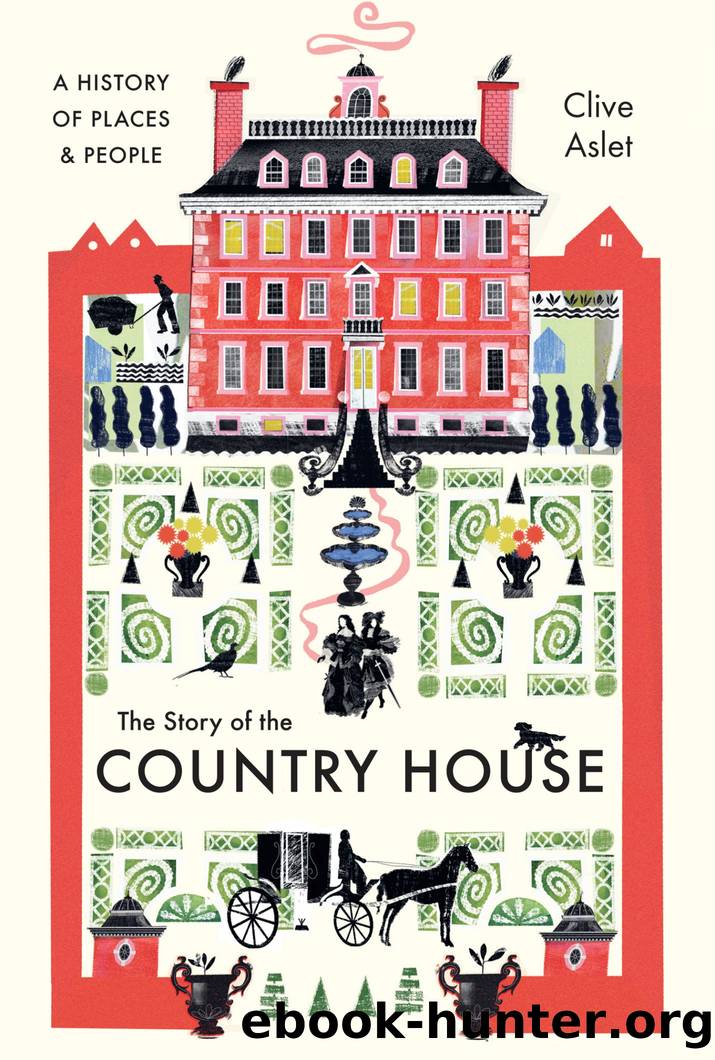The Story of the Country House by Clive Aslet

Author:Clive Aslet
Language: eng
Format: epub
Publisher: Yale University Press
Published: 2021-07-21T19:10:26+00:00
This amounted to âa kind of revolution in the whole system of this useful and elegant artâ. The idea that taste could be subject to revolutions was itself new.
One of the greatest of all Adamâs many country houses is Syon House, to the west of London, commissioned by the 1st Duke of Northumberland (fig. 26). Beginning life as plain Hugh Smithson, the duke had become rich and ennobled through a series of inheritances and marriage, and was now a leading politician. Although Syon seems to modern eyes a large country house, to the duke and his architect it was simply a villa, only used for short periods and originally not hung with paintings. Adamâs Grand Tour had been to good effect, as discussions may have started soon after his return; work began in 1762. Syon had once been a nunnery (its name derives from Mount Zion), built around a central square. Adam kept the gaunt exterior, giving it battlements and corner turrets, recalling the south front at Wilton. Inside, he quarried a series of spectacular interiors out of the crumbling Tudor pile. The cultivated duke âexpressed his desire that the whole might be executed entirely in the antique styleâ, according to Adam in the Works. That suited âBob the Romanâ, as he was sometimes known. In the plan, he put his study of the baths of Ancient Rome to good use, creating a sequence of rooms of contrasting shapes, with screens of columns and apses to give extra interest to the eye. Had he also looked at the plan of Holkham? Syon itself drove him to invention, since the existing house was irregular as well as dilapidated and Adam had to take account of oddly shaped spaces and changes of level. He succeeded, in his own words, in managing âthe inequality of levels ⦠in such a manner as to increase the scenery and add to the movement, so that an apparent defect has been converted into a real beautyâ. Revealing words. They show that Adam thought of architecture in terms of âsceneryâ, a term usually applied to the stage at that date; he liked to produce a series of effects. Similarly, âmovementâ in the architecture kept the eye engaged, the visitorâs interest sharpened; the stately interiors of the early years of the century had been static.
Download
This site does not store any files on its server. We only index and link to content provided by other sites. Please contact the content providers to delete copyright contents if any and email us, we'll remove relevant links or contents immediately.
Kathy Andrews Collection by Kathy Andrews(11726)
The remains of the day by Kazuo Ishiguro(8819)
Paper Towns by Green John(5087)
Spare by Prince Harry The Duke of Sussex(5072)
The Body: A Guide for Occupants by Bill Bryson(4974)
Industrial Automation from Scratch: A hands-on guide to using sensors, actuators, PLCs, HMIs, and SCADA to automate industrial processes by Olushola Akande(4972)
Machine Learning at Scale with H2O by Gregory Keys | David Whiting(4172)
Be in a Treehouse by Pete Nelson(3942)
Never by Ken Follett(3788)
Harry Potter and the Goblet Of Fire by J.K. Rowling(3772)
Goodbye Paradise(3726)
Into Thin Air by Jon Krakauer(3308)
The Remains of the Day by Kazuo Ishiguro(3293)
The Cellar by Natasha Preston(3259)
The Genius of Japanese Carpentry by Azby Brown(3224)
Fairy Tale by Stephen King(3216)
120 Days of Sodom by Marquis de Sade(3177)
Drawing Shortcuts: Developing Quick Drawing Skills Using Today's Technology by Leggitt Jim(2996)
The Man Who Died Twice by Richard Osman(2995)
